Volume 14 | Number 1 | May 2025
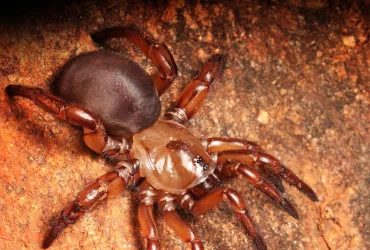 v14i1.360
v14i1.360eISSN: 1800-427X (online)
DOI:10.47605/tapro.v14i1.360
Submitted date: 15 February 2025
Accepted date: 21 April 2025
Published date: 31 May 2025
Pp. 85–87.
Escaping the cage: Range expansion of the grosbeak starling in Borneo
Mukhlisi, D.A. Putra, T. Atmoko, R. Garsetiasih & S. Hadi
*Corresponding author. E-mail: mukhlisi.arkan@gmail.com
The grosbeak starling (Scissirostrum dubium), also known as the finch-billed Myna, is an endemic bird species of Sulawesi and several surrounding satellite islands. It is distinctive among starlings in having a thick yellow bill and stiff, waxy red feathers on the rump. According to the IUCN Red List, this species is currently classified as Least Concern (LC), but its global population is declining due to habitat destruction, fragmentation, and illegal hunting. One of the major threats is the loss of suitable nesting sites, as trees are essential for providing shelter and breeding grounds. A study conducted in Central Sulawesi even found a population collapse, with 92% of nests disappearing due to the loss of remnant trees.
Section Editor: Richard A. Noske
DOI:10.47605/tapro.v14i1.360
Submitted date: 15 February 2025
Accepted date: 21 April 2025
Published date: 31 May 2025
Pp. 85–87.
Escaping the cage: Range expansion of the grosbeak starling in Borneo
Mukhlisi, D.A. Putra, T. Atmoko, R. Garsetiasih & S. Hadi
*Corresponding author. E-mail: mukhlisi.arkan@gmail.com
The grosbeak starling (Scissirostrum dubium), also known as the finch-billed Myna, is an endemic bird species of Sulawesi and several surrounding satellite islands. It is distinctive among starlings in having a thick yellow bill and stiff, waxy red feathers on the rump. According to the IUCN Red List, this species is currently classified as Least Concern (LC), but its global population is declining due to habitat destruction, fragmentation, and illegal hunting. One of the major threats is the loss of suitable nesting sites, as trees are essential for providing shelter and breeding grounds. A study conducted in Central Sulawesi even found a population collapse, with 92% of nests disappearing due to the loss of remnant trees.
Section Editor: Richard A. Noske
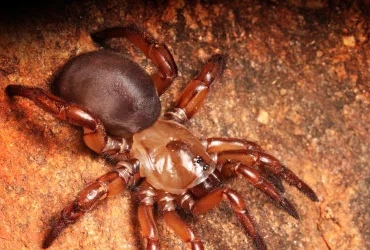 v14i1.359
v14i1.359eISSN: 1800-427X (online)
DOI:10.47605/tapro.v14i1.359
Submitted date: 27 January 2025
Accepted date: 21 April 2025
Published date: 31 May 2025
Pp. 82–84.
The genus Typhonium Schott (Araceae) in Java, Indonesia
A.S.D. Irsyam, I.P.A. Husaini, Harto &
M.R. Hariri
*Corresponding author. E-mail: muhammad.rifqi.hariri@brin.go.id
The genus Typhonium Schott comprises more than 70 species with a vast geographic range, extending from Mongolia through tropical regions of Asia and reaching as far south as northern and eastern Australia.The genus consists of small, seasonal geophytic herbs with a (sub)globose tuber or short rhizome. Leaves vary in number and shape, ranging from simple to decompound with diverse leaflet forms. Inflorescences typically emerge after leaf development on a short or long peduncle. The spathe, ovate to lanceolate, is divided by a constriction below the staminate zone, with a limb often coloured pale to deep purple, rarely whitish or pinkish. The spadix includes a basal pistillate zone, a sterile zone with staminodes, a staminate zone, and a sterile appendix that varies in length, shape, and orientation, from erect to pendulous, narrowly conical to tail-like.
Section Editor: Russell L. Barrett
DOI:10.47605/tapro.v14i1.359
Submitted date: 27 January 2025
Accepted date: 21 April 2025
Published date: 31 May 2025
Pp. 82–84.
The genus Typhonium Schott (Araceae) in Java, Indonesia
A.S.D. Irsyam, I.P.A. Husaini, Harto &
M.R. Hariri
*Corresponding author. E-mail: muhammad.rifqi.hariri@brin.go.id
The genus Typhonium Schott comprises more than 70 species with a vast geographic range, extending from Mongolia through tropical regions of Asia and reaching as far south as northern and eastern Australia.The genus consists of small, seasonal geophytic herbs with a (sub)globose tuber or short rhizome. Leaves vary in number and shape, ranging from simple to decompound with diverse leaflet forms. Inflorescences typically emerge after leaf development on a short or long peduncle. The spathe, ovate to lanceolate, is divided by a constriction below the staminate zone, with a limb often coloured pale to deep purple, rarely whitish or pinkish. The spadix includes a basal pistillate zone, a sterile zone with staminodes, a staminate zone, and a sterile appendix that varies in length, shape, and orientation, from erect to pendulous, narrowly conical to tail-like.
Section Editor: Russell L. Barrett
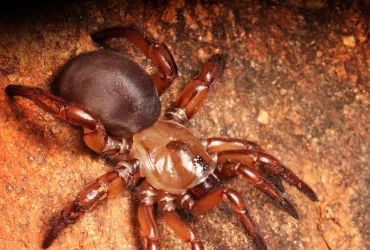 v14i1.358
v14i1.358eISSN: 1800-427X (online)
DOI:10.47605/tapro.v14i1.358
Submitted date: 2 August 2024
Accepted date: 21 April 2025
Published date: 31 May 2025
Pp. 79–81.
Courtship and mating observation of olive ridley sea turtle (Lepidochelys olivacea)
K. Silambarasan*, A. Tiburtius, A.J. Chembian, C. Babu & P. Kumar
*Corresponding author. E-mail: silambuplankton@hotmail.com
Sea turtles spend most of their time below the water surface, making it difficult to observe their reproductive behaviour, particularly in open ocean habitats. Olive ridley sea turtles, Lepidochelys olivacea (Eschscholtz, 1829), and Kemp’s ridley sea turtle, Lepidochelys kempii (Garman, 1880), are the only species of the genus Lepidochelys, and tend to form large aggregations at nesting sites. Olive ridley sea turtles are unique in that some populations nest en mass, while others are solitary nesters. Irruptive nesting events are known as arribadas, where thousands of females come ashore to nest simultaneously. While other sea turtle species are also present in marine areas near nesting grounds, olive ridleys are distinctive in forming large aggregations during arribadas, while spending inter-nesting time in the open ocean. These nearshore areas provide rare opportunities for observation and facilitate research on their reproductive behaviour. However, studying their behaviour in offshore waters remains challenging, as mating events are typically brief and infrequent, making detailed studies of their mating rituals difficult.
Section Editor: Leandro Bugoni
DOI:10.47605/tapro.v14i1.358
Submitted date: 2 August 2024
Accepted date: 21 April 2025
Published date: 31 May 2025
Pp. 79–81.
Courtship and mating observation of olive ridley sea turtle (Lepidochelys olivacea)
K. Silambarasan*, A. Tiburtius, A.J. Chembian, C. Babu & P. Kumar
*Corresponding author. E-mail: silambuplankton@hotmail.com
Sea turtles spend most of their time below the water surface, making it difficult to observe their reproductive behaviour, particularly in open ocean habitats. Olive ridley sea turtles, Lepidochelys olivacea (Eschscholtz, 1829), and Kemp’s ridley sea turtle, Lepidochelys kempii (Garman, 1880), are the only species of the genus Lepidochelys, and tend to form large aggregations at nesting sites. Olive ridley sea turtles are unique in that some populations nest en mass, while others are solitary nesters. Irruptive nesting events are known as arribadas, where thousands of females come ashore to nest simultaneously. While other sea turtle species are also present in marine areas near nesting grounds, olive ridleys are distinctive in forming large aggregations during arribadas, while spending inter-nesting time in the open ocean. These nearshore areas provide rare opportunities for observation and facilitate research on their reproductive behaviour. However, studying their behaviour in offshore waters remains challenging, as mating events are typically brief and infrequent, making detailed studies of their mating rituals difficult.
Section Editor: Leandro Bugoni
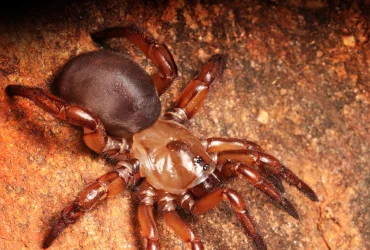 v14i1.357
v14i1.357eISSN: 1800-427X (online)
DOI:10.47605/tapro.v14i1.357
Submitted date: 24 December 2024
Accepted date: 21 April 2025
Published date: 31 May 2025
Pp. 77–78.
First record of shining bronze cuckoo (Chalcites lucidus) west of the Wallace Line
A.C. Herwanto, H. Susanto & R. Eprilurahman
*Corresponding author. E-mail: rurybiougm@ugm.ac.id
As part of bird monitoring activities in the working area of the Yogyakarta Natural Resources Conservation Agency (Balai Konservasi Sumber Daya Alam Yogyakarta), particularly in Gunungkidul Regency, officials unintentionally documented the presence of a Shining Bronze-cuckoo, Chalcites lucidus (Gmelin, 1788). We photographed a single individual on 21 June 2024 that we initially misidentified as a Horsfield's Bronze-cuckoo, Chalcites basalis
Section Editor: Bas van Balen
DOI:10.47605/tapro.v14i1.357
Submitted date: 24 December 2024
Accepted date: 21 April 2025
Published date: 31 May 2025
Pp. 77–78.
First record of shining bronze cuckoo (Chalcites lucidus) west of the Wallace Line
A.C. Herwanto, H. Susanto & R. Eprilurahman
*Corresponding author. E-mail: rurybiougm@ugm.ac.id
As part of bird monitoring activities in the working area of the Yogyakarta Natural Resources Conservation Agency (Balai Konservasi Sumber Daya Alam Yogyakarta), particularly in Gunungkidul Regency, officials unintentionally documented the presence of a Shining Bronze-cuckoo, Chalcites lucidus (Gmelin, 1788). We photographed a single individual on 21 June 2024 that we initially misidentified as a Horsfield's Bronze-cuckoo, Chalcites basalis
Section Editor: Bas van Balen
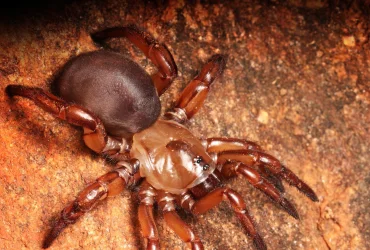 v14i1.356
v14i1.356eISSN: 1800-427X (online)
DOI:10.47605/tapro.v14i1.356
Submitted date: 9 December 2024
Accepted date: 21 April 2025
Published date: 31 May 2025
Pp. 75–76.
Sparks beneath the sea? First record of a lined colour morph in the sea snakes
M.H. Patel & D.S. Parmar
*Corresponding author. E-mail: ophiophagus_hannah10@yahoo.com
A recent study by Parmar & Kaiser (2024) linked unusual morphs in Russell’s Vipers and Wolfsnakes to the spark/spark genotype mutation. We report a similar aberrant pattern for the first time in a sea snake observed in India (Bharuch District, Gujarat). During a marine reptile survey on January 26, 2019, near Aliabet, Bharuch District, in the Gulf of Khambhat (21.5958°N, 72.4408°E), fishermen caught 24 Annulated Sea Snakes (Hydrophis cyanocinctus) and one Little Filesnake (Acrochordus granulatus). One sea snake had an unusual pattern, differing from all other sea snakes. This individual measured 1030 mm in SVL with a tail length of 110 mm.
Section Editor: Ivan Ineich
DOI:10.47605/tapro.v14i1.356
Submitted date: 9 December 2024
Accepted date: 21 April 2025
Published date: 31 May 2025
Pp. 75–76.
Sparks beneath the sea? First record of a lined colour morph in the sea snakes
M.H. Patel & D.S. Parmar
*Corresponding author. E-mail: ophiophagus_hannah10@yahoo.com
A recent study by Parmar & Kaiser (2024) linked unusual morphs in Russell’s Vipers and Wolfsnakes to the spark/spark genotype mutation. We report a similar aberrant pattern for the first time in a sea snake observed in India (Bharuch District, Gujarat). During a marine reptile survey on January 26, 2019, near Aliabet, Bharuch District, in the Gulf of Khambhat (21.5958°N, 72.4408°E), fishermen caught 24 Annulated Sea Snakes (Hydrophis cyanocinctus) and one Little Filesnake (Acrochordus granulatus). One sea snake had an unusual pattern, differing from all other sea snakes. This individual measured 1030 mm in SVL with a tail length of 110 mm.
Section Editor: Ivan Ineich
Hubungi Kami
The ultimate aim of the journal is to provide an effective medium for communication of the latest and best scientific information.
Copyright © 2020 Taprobanica. All Rights Reserved
Jasa Pembuatan Website by IKT




